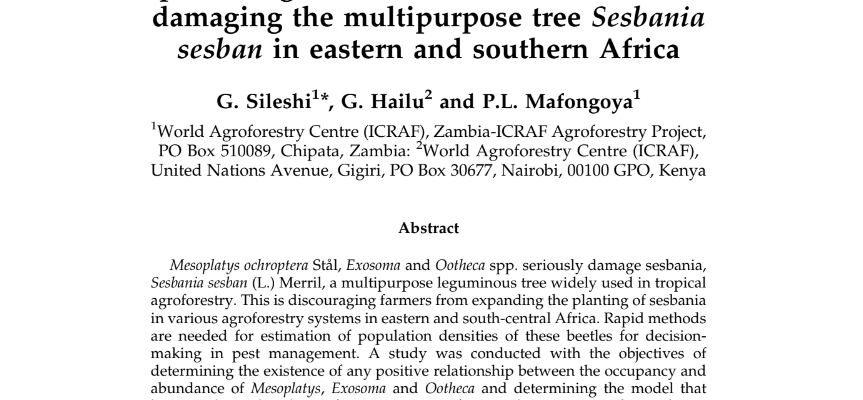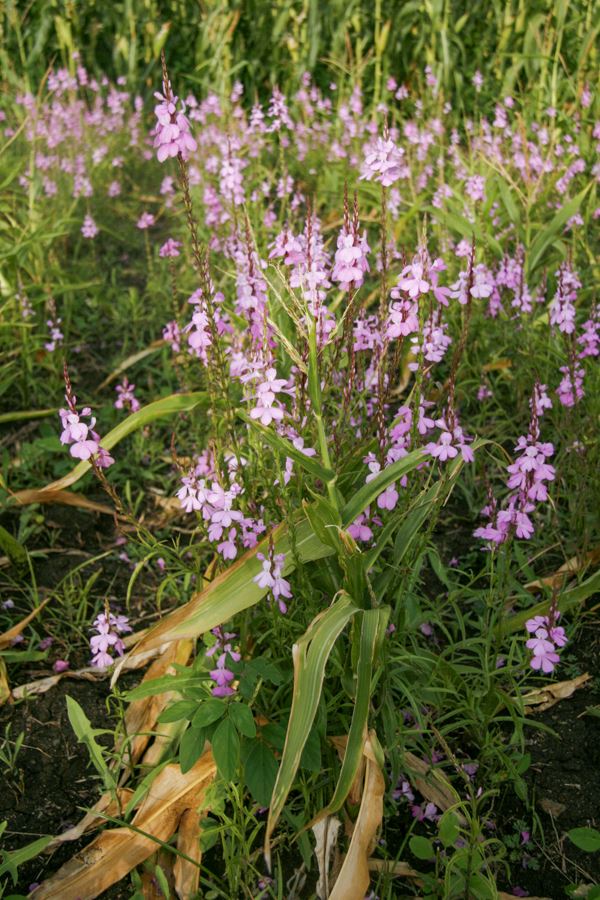Mesoplatys ochroptera Sta ̊l, Exosoma and Ootheca spp. seriously damage sesbania, Sesbania sesban (L.) Merril, a multipurpose leguminous tree widely used in tropical agroforestry. This is discouraging farmers from expanding the planting of sesbania in various agroforestry systems in eastern and south-central Africa. Rapid methods are needed for estimation of population densities of these beetles for decision-making in pest management. A study was conducted with the objectives of determining the existence of any positive relationship between the occupancy and abundance of Mesoplatys, Exosoma and Ootheca and determining the model that best predicts abundance from occupancy for rapid estimation of population densities. The Poisson model assuming spatial randomness, the negative binomial distribution (NBD) model assuming spatial aggregation, the Nachman model without any distribution assumption, and a General model incorporating spatial variance-abundance and occupancy-abundance relationships were fitted to data on adult M. ochroptera, Exosoma and Ootheca from western Kenya, southern Malawi and eastern Zambia. Very strong variance to abundance relationships were observed in the spatial pattern of all three beetles. The occupancy-abundance relationships were also positive and strong in all beetles. The occupancy and abundance predicted by the four models were closest to the observed at lower densities compared with higher beetle densities. At higher population densities, the NBD and the General model gave better fit for M. ochroptera and Exosoma. For Ootheca populations, the Poisson and NBD models gave better fit at higher population densities. The relationships established here can be used as guide to estimate beetle densities for decision-making in pest management.
Authors: Gudeta Sileshi, G. Hailu and P.L. Mafongoya
Contact address: sileshigw@gmail.com
Institution: Addis Ababa University, Department of Plant Biology and Biodiversity Management
Twitter name of the institution: @AddisUniversity
Twitter link: https://x.com/AddisUniversity
Available downloads:


